Acclimatization Ride
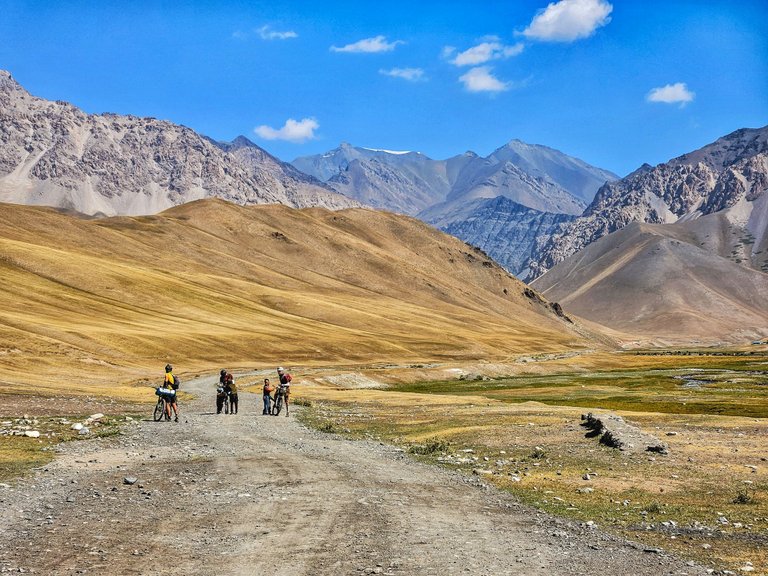
One does not simply ride the Silk Road Mountain Race. If you head beyond the borders of your home country—or even your home continent—it’s smart to acclimatize. Here in Kyrgyzstan, the most important thing was getting used to the high altitude. But that wasn’t the only part. We had to sleep off the jet lag, figure out what the shops sell, learn what the roads look like, and how to actually communicate with locals. Trying to figure all that out only once the race started would’ve been way too stressful.
That’s why we came ten days early, and on the very first evening we set off into the nearest mountains, climbing higher and higher. We just wanted to get out of the city, where the stench was unbearable.
We had a very vague plan—cross the mountain range south of Osh and reach the first base camp under Lenin Peak, which also happened to be the first checkpoint of the race. And beyond that? We hadn’t planned that far ahead—remember from the last chapter—we had it pretty much “whatever, we’ll see”.
⛰️ Sleeping on Sněžka
Around half past eleven at night, we stopped at about the same elevation as our Czech Sněžka and laid down on a flat patch of ground. For the first time, I tested my whole sleeping setup in one go:
- Bach Heads Up Bivy — which I got about 14 days before departure and only pitched once in the garden.
- Nemo Tensor Extreme Wide — an extremely insulated, tough (and heavy) sleeping pad I borrowed. I’ll admit, it felt like sleeping on a featherbed.
- Cumulus X-lite 200 — my classic go-to bag I bring everywhere.
Around Osh there’s a heat island, so cold wasn’t an issue. The real problem turned out to be that I’d come on this trip with a bunch of night owls, who each morning got up painfully slowly like they’d been clubbing all night. I’m used to waking up at 6 a.m. sharp, happy to pack up before the sun starts roasting me alive. That big yellow ball in the sky is my sworn enemy.
The next day we didn’t set off until 10! The others still wanted to take photos of their bikes for the Rigs of Silk Road Mountain Race on bikepacking.com. I refused—I didn’t want to follow a million rules about what the photo should look like, and I wasn’t in the mood to describe my gear all over again.
🏙️ Not All Roads Lead to Rome
The guys bombed down some random steep path, convinced that a road that wide had to lead somewhere. Well, it didn’t—so we had to climb back up. Then the two Tomášes suggested ditching the road entirely and bushwhacking straight up the hill, and that’s when I realized this acclimatization might actually be harder than the race itself. Luckily Tony won rock-paper-scissors, so we stuck to the human-friendly path.
In that heat I was barely moving, and we weren’t even that high up. How the hell am I going to survive this whole thing?
Once we crested the main climb, the brutal gradients stopped, and the road leveled out into something more reasonable. Soon after, we got our first acclimatization test—shopping in a forgotten little village. The store was tiny but self-service. The selection wasn’t broad, but everything came in XXL size. Huge ice cream. Huge Snickers. Huge Bouty. Giant packs of gas station croissants. Honestly, resupplying here looked tricky, because I had no idea what to even buy!
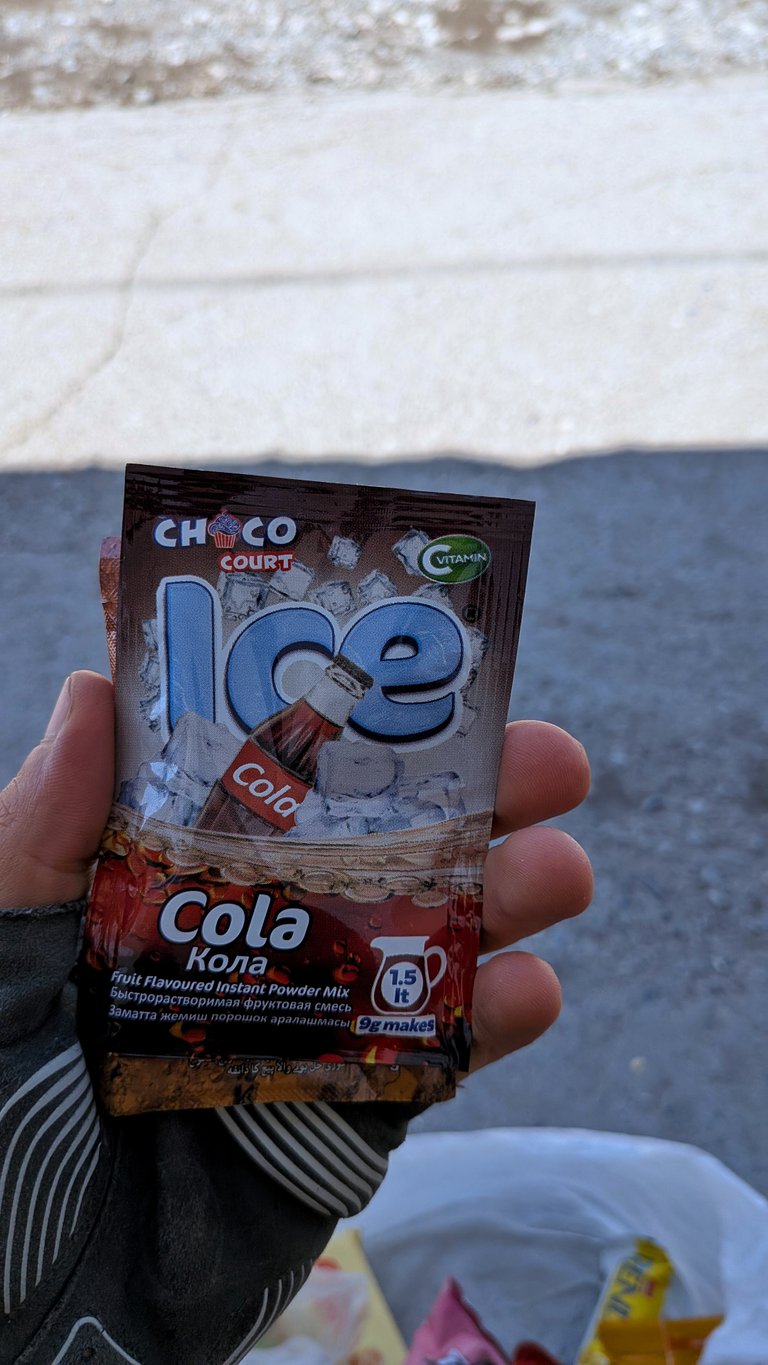
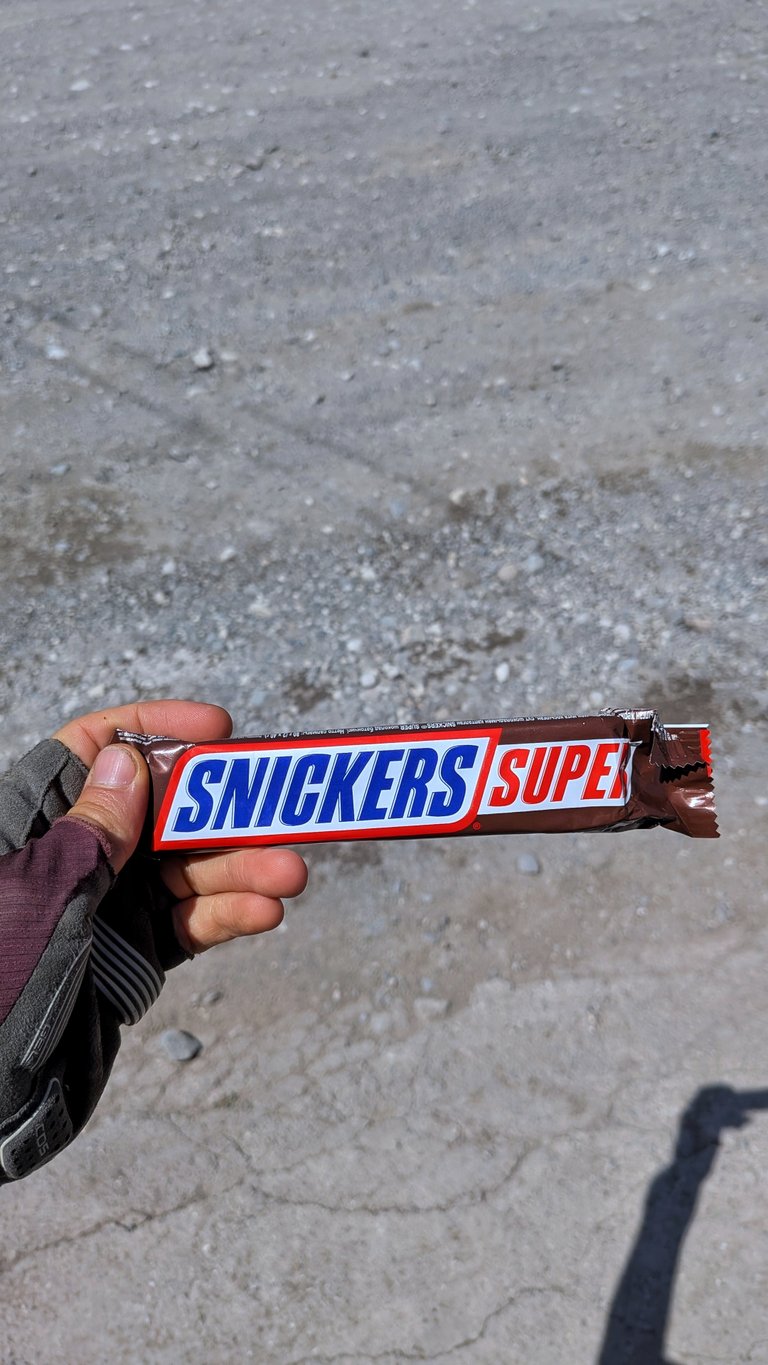
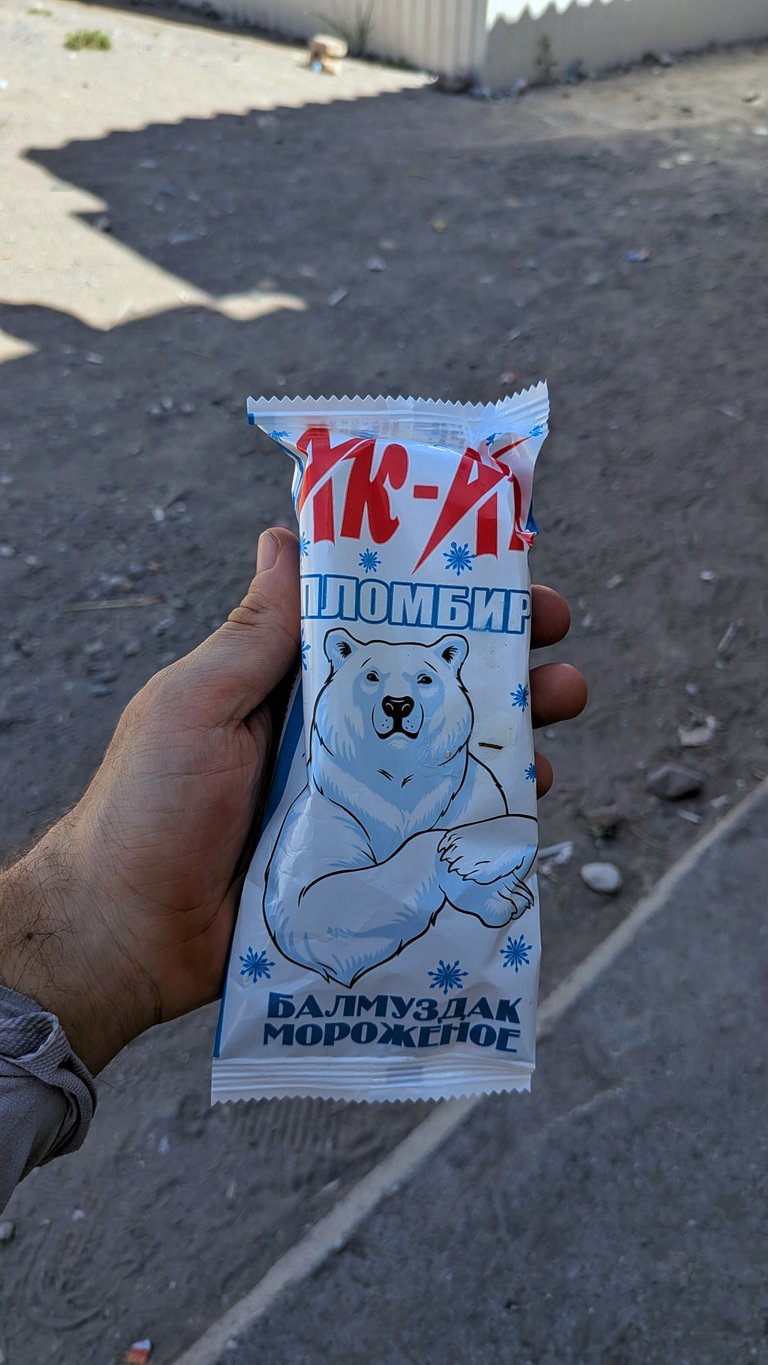
Then came the next challenge—finding a local restaurant. At the first one, a man kept repeating “zakryté, zakryté” and waved us elsewhere. He guided us to another, asked a few questions, then told us—also zakryté. Thankfully his local knowledge was endless, because he led us to a third spot that was actually open. We got a delicious fried fish with bread. No worries about freshness—they literally killed it in front of us.
A trip to the outhouse also taught me that local toilet paper doesn’t have a tube!
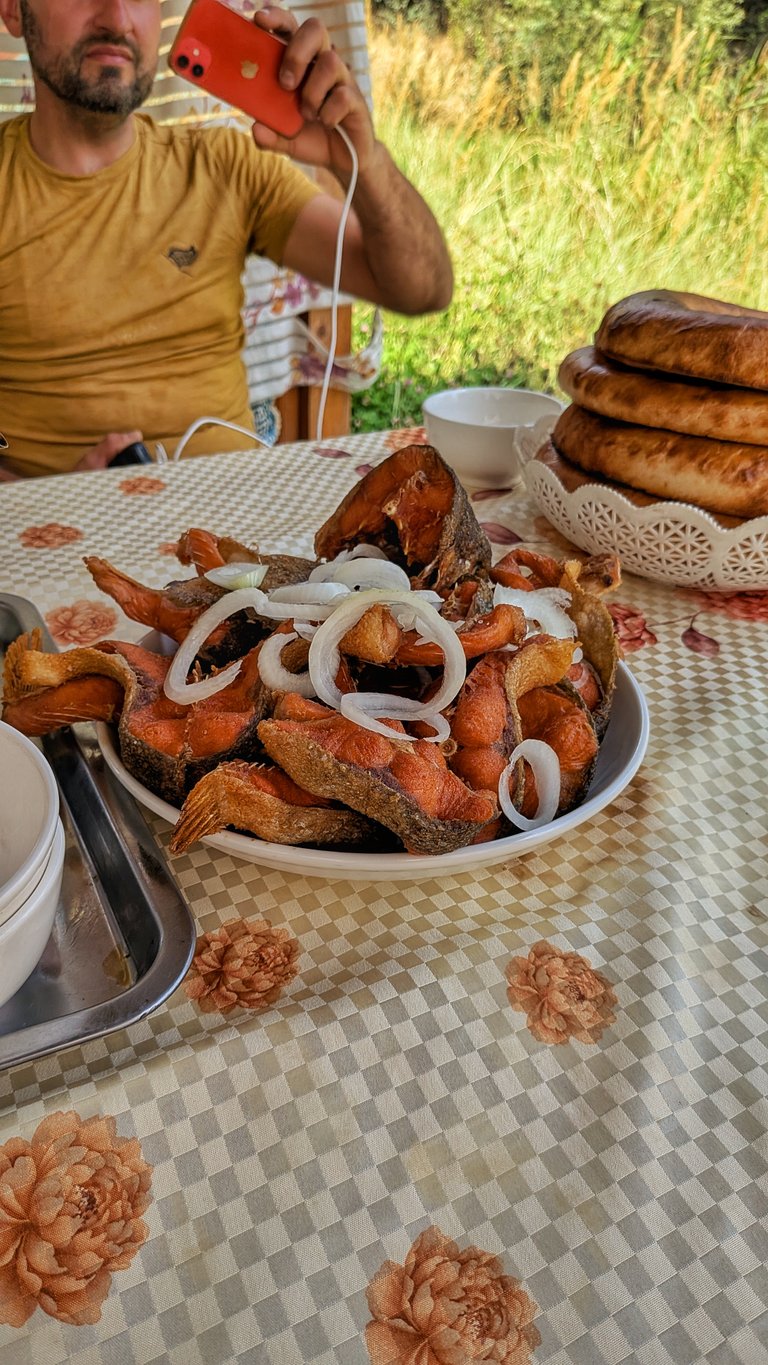

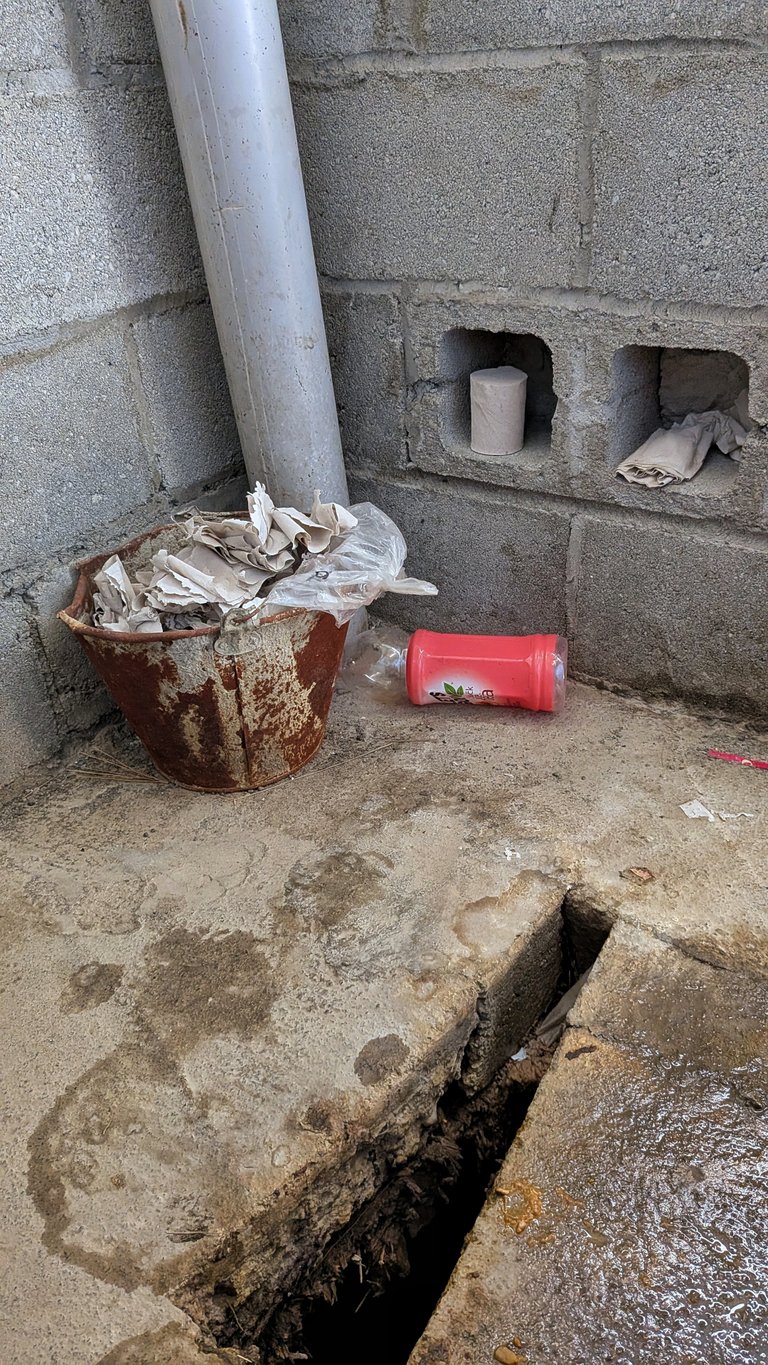
🖤 Dig Your Own Coal
Somewhere in the mountains, we spotted a “camping spot” marked on mapy.cz and decided to head there. It was at around 2200 meters—perfect for easing into acclimatization.
The road itself wasn’t bad in terms of surface or gradient, but it turned out to lead to a coal mine. Trucks kept passing us, kicking up clouds of dust. I pulled up my buff to keep from inhaling too much. Even the shepherds driving their flocks wore masks.
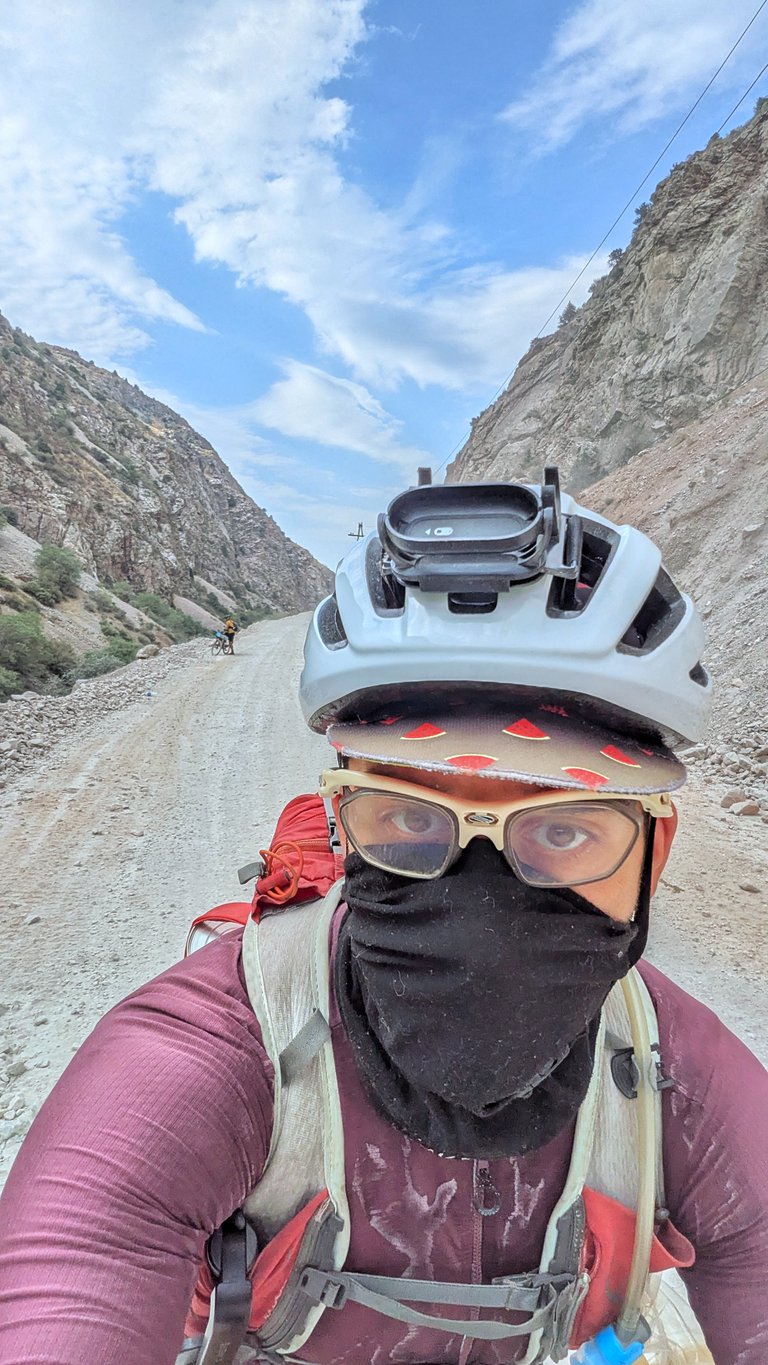
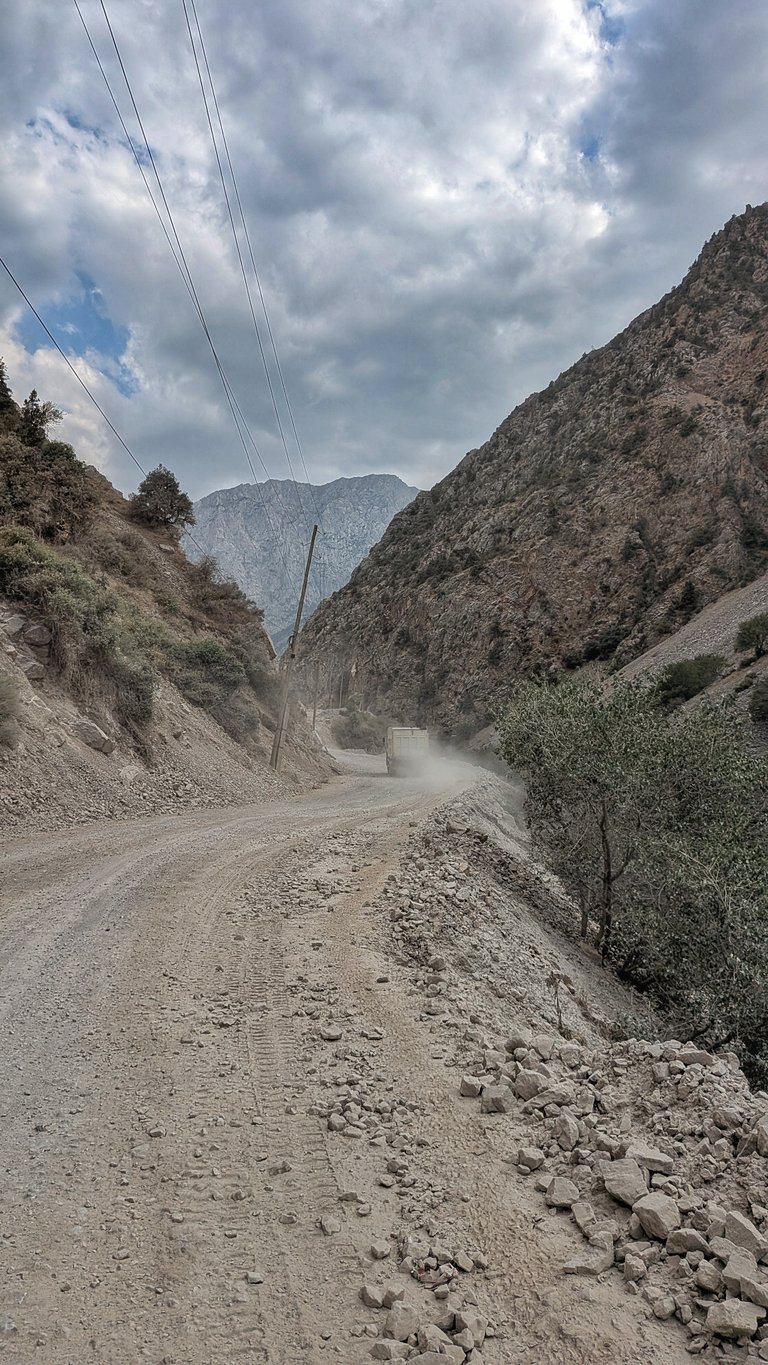
Closer to the end things quieted down. Sometimes we saw people stop their cars by a coal vein, hop out with a pickaxe, and hack off a load for themselves. We rolled into the campsite at 9 p.m.—and there was even a shelter! But the Tomášes and I still set up outside—we wanted to test our gear in the rain. Of course, it only sprinkled a bit, then nothing.
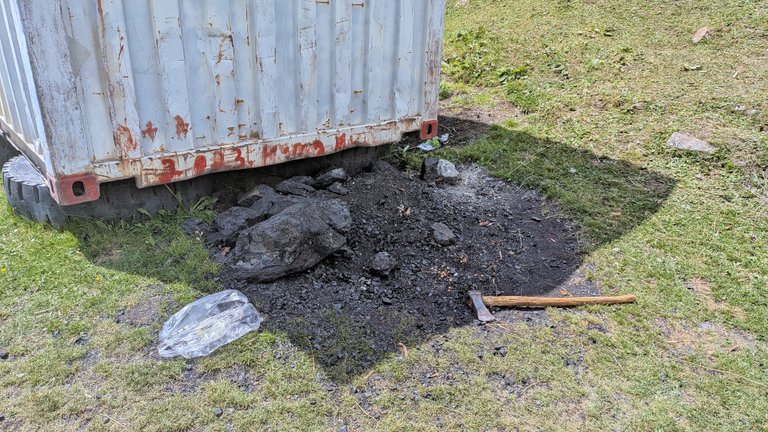
The next day we “set off” at 10:30! I used the downtime to scramble up the nearby hills. My Shimano SH-EX700 touring shoes were perfect here—I was glad I hadn’t brought stiff carbon-soled race shoes, or I would’ve eaten it fast.
🐄 Animal Farm
I started to understand the lay of the land here. Most roads cut through endless valleys, with steep slopes climbing up on both sides. Livestock—mostly cows and sheep—was everywhere. Free-roaming horses too, happily grazing.
But it wasn’t exactly an animal paradise. Sometimes we’d find a half-eaten dead sheep or cow by the roadside. Some horses had their front legs tied so they couldn’t trot, or were chained to the ground. And when carrying a fat tourist, they could barely even stop for a drink.
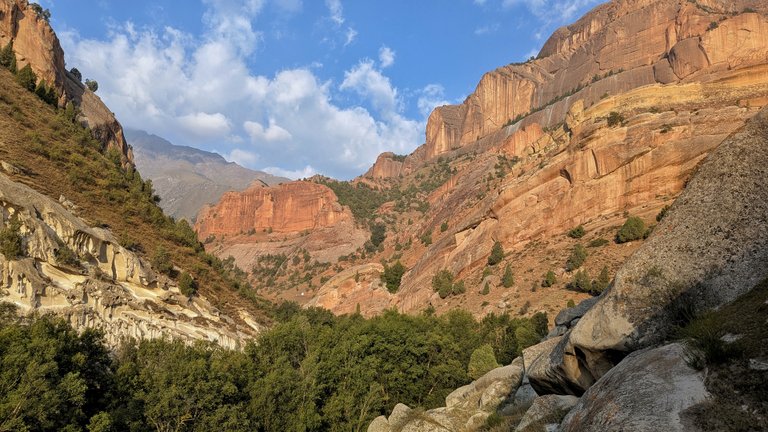
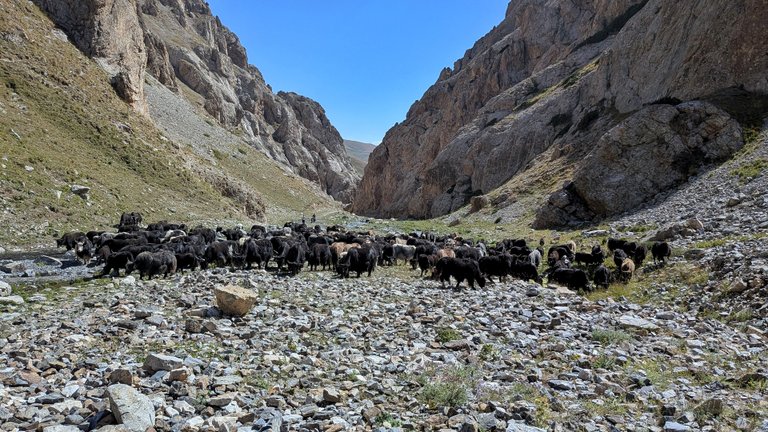
That night we stayed in a yurt camp at 3000 meters. Still a gradual climb? Maybe. The altitude was starting to hit me, though I wasn’t sure if it wasn’t just the heat. Shade was impossible to find, and the sun was brutal. Luckily the road followed a stream, so cooling off was easy.
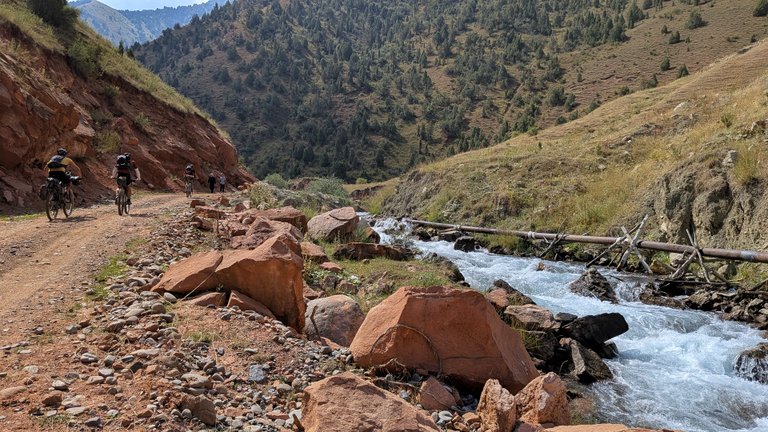
At the yurt camp we still had time, so we pushed higher before coming back down. I made it to 3500 meters before I was completely done. Nausea hit me hard. I told the others to keep going, but I turned back.
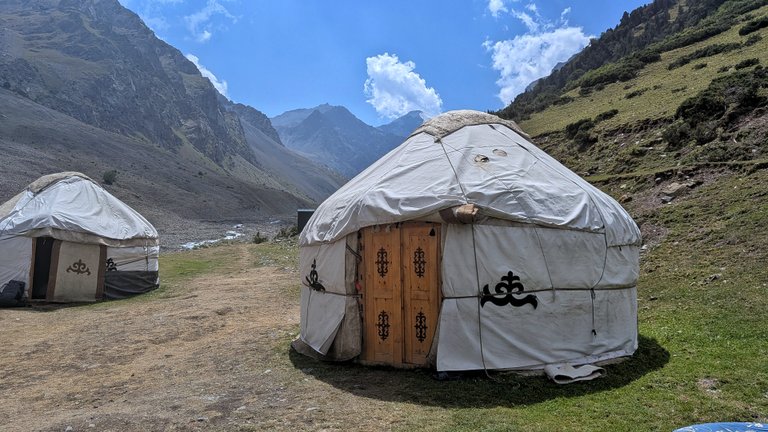
💊 Will Drugs Help?
Before the trip I tried taking Ginkgo biloba, which some studies claim can ease altitude sickness. Either it didn’t work, or I was just lucky my symptoms weren’t worse. According to Wikipedia, the classic signs of acute mountain sickness are:
- loss of appetite, vomiting
- insomnia
- fatigue or weakness
- dizziness
- lethargy
- unsteady gait
- frequent urination, combined with reduced thirst (a dangerous combo that can cause dehydration)
Apart from the frequent peeing, I basically checked all the boxes.
Two weeks before the flight, I’d also been taking probiotics, something I usually do before any race. Ultras are often a battle of the gut.
🏕️ I Underestimated Food
At the yurt camp we met two Polish travelers—Dominika and Ania—with whom we had an “interesting duel” the next day. We had no concrete plan to get to the other side of the mountains, but after checking the map, we realized there was only one reasonable route—straight over Jiptick Pass. Tony then remembered that this pass had already been part of a Silk Road Mountain Race. I looked up what was written about the pass we chose for gradual acclimatization in Kyrgyzstan:
What was probably already one of the hardest passes ever to be included in this race, was recently turned into a real test of character and will power by a massive landslide that has added some really steep hike a bike to avoid a dangerous section of loose scree.
Riders pushed, carried and generally forced their bikes over this 4185M monster for most of the day. Some riders said this was not hike a bike but rather push up a bike, with arms and shoulders aching more than their legs.
In translation—it was ridiculously high and ridiculously hard. We knew it was high, of course. Probably not the best acclimatization technique, but we simply had to get over that hill. No excuses.
At the yurt we had dinner. I offered the tiny piece of meat I got to Tomáš Fabián, who risked it happily. My food was running low, but I still had one ramen for tomorrow. Ania took pity on me and gave me a carrot-cake-flavored bar, which she claimed was so disgusting she would rather starve.
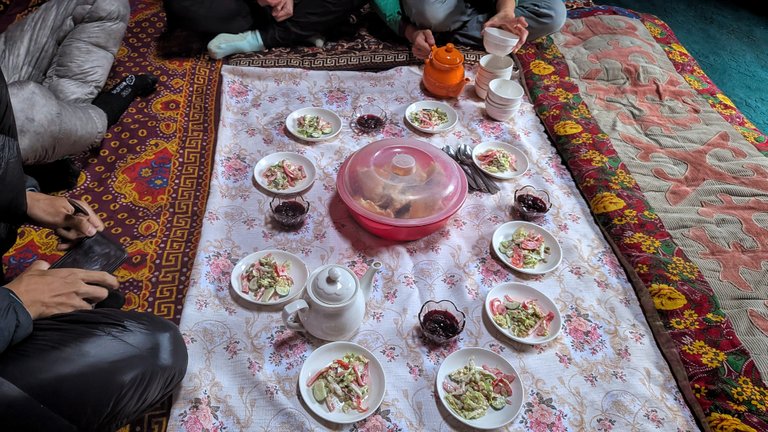
My head still hurt, so I tried aspirin. I also felt a mild fever. We didn’t sleep inside the yurt but built our own shelters to practice setup and packing. By night it was a bit cold, so I put on warmer socks and my Alpha Hoody from Nalehko. It helped, though…
🤕 Altitude Hits
I still didn’t sleep well, at least according to my Garmin. I also checked my oxygen levels with a pulse oximeter—it showed around 86%. Not great. When the night got chilly, I noticed another inconvenience with my bivy. Even though it wasn’t a full bag, water condensed inside. Not terrible, but especially around my feet there was enough. Whenever possible, I kept the bivy as open as I could to vent the “steam”.
In the morning, the whole yurt camp was waking up. Finally, we set off at a more reasonable time, shortly after eight. I had breakfast first. Different groups climbed toward Jiptick Pass. Besides us and the Polish tourists, there was an Israeli group and someone with luggage transport. Strangely, half of the people seemed either unemployed or bankrupt.
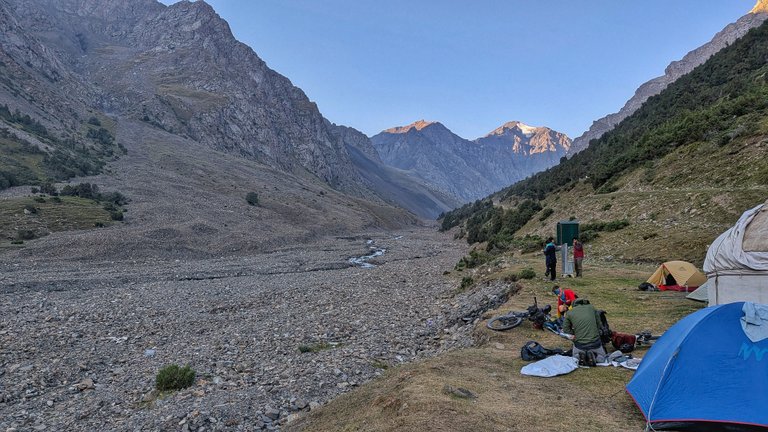
As for marking the route, of course there was none. We probably should have asked in the yurt camp. According to the map, there were two trails. If you’ve seen my video about mapy.cz, you know there are two types of unpaved paths—dashed ones and dotted ones. Dashed is gravel-like, dotted is Mordor for tourists, often just a narrow trail. We thought—let’s try the wider one—it’ll be better for the bikes. Wrong!
This path was blocked by a massive rock avalanche. I reached it still in decent spirits. Up to 3500 meters I was struggling. Short of breath, feeling like a bee in a nose. Then it leveled off briefly, which had nothing to do with the slope. But then came the avalanche…
I was slightly ahead and tried to cross it alone. Big mistake. Suddenly, the rocks under my feet started shifting, and I was holding on more by sheer will than by muscle mechanics. I felt like a wizard. A powerless wizard. So I turned back.
🥾 They Spread Us on the Bread
Tomáš Hadámek wasn’t afraid and climbed almost vertically up the loose wall. I wasn’t about to do that. Luckily, Tomáš Fabián found a very narrow path along the scree wall, barely passable. Then we just carried the bikes over the remaining larger rocks, which were more stable. We reached Jiptick Pass after about five hours. Over 10 kilometers we climbed 1300 meters. From the top, you could clearly see the other trail was much easier.
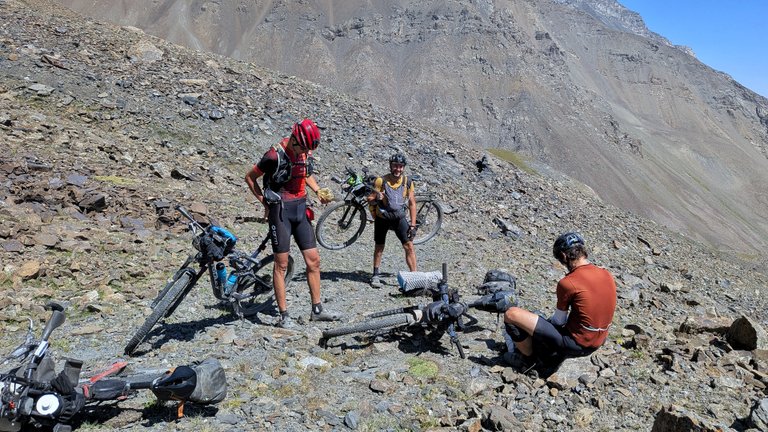
I dragged myself up with the last of my strength. If all the passes in the race looked like this, I wasn’t sure how I’d manage. And it was nice weather. I couldn’t imagine doing this in bad conditions. My head hurt, and I couldn’t even push the bike straight.

The views at the top were stunning. I didn’t even realize I was seeing a seven-thousander for the first time. These mountains were so high I thought they were clouds.
I headed down first. At that altitude, I felt sick and needed to descend. That was tricky. The terrain was so tough I’d hardly ride it under normal conditions. Now, with a spinning head and no balance, I didn’t dare ride and pushed a significant part.
On the other side of Jiptick Pass, the Polish girls already had their tent set up. They were faster not only uphill but also managed the descent. Tony had it toughest, carrying the most gear and having to ferry some bags separately over the scree avalanche.

🚸 Got a Handshake?
The yurt camp was at 3200 meters. The guys went down to town to resupply, but I wasn’t going anywhere. I took another aspirin to ease my headache, but it didn’t help much. Altitude hit me hard, yet I still believed I could finish the race. Even if I had to crawl to the finish. Fact was clear—I’d hit 4200, and the race wouldn’t have higher passes. There we’d barely crest 4000.
Right next to the yurt camp was a stream for refilling water. Filtering was tedious. I had a Katadyn BeFree with carbon filter, but I removed the carbon—it was too slow. Filling the hydration bladder was tricky with limited limbs. Probably just my competitive spirit. Hannes said his is fast, but that’s just perception. Later in the race I decided to filter water in the bladder using disinfection tablets and directly to bottles via Katadyn. Having instant water was a clear advantage.
For the day, I rode 19 km. You could say I took it easy.
That night I slept poorly again. Waking, high pulse, high everything except quality sleep. The next day had no major passes.
In Kyrgyzstan, especially in villages, people—especially kids—love seeing travelers. They had a routine: waving, calling “hello,” wanting to high-five. When we stopped, they wanted a handshake, our names, and where we were from. If you lingered too long, they’d inspect your stuff. They spoke a mix of English and Russian.
🚮 Where to Put Trash?
We descended to Sary-Mogol. After three nights, we finally had internet! In those valleys, signal is nearly non-existent. Well, at one point, on top of Juptick Pass, there was some, though slow.
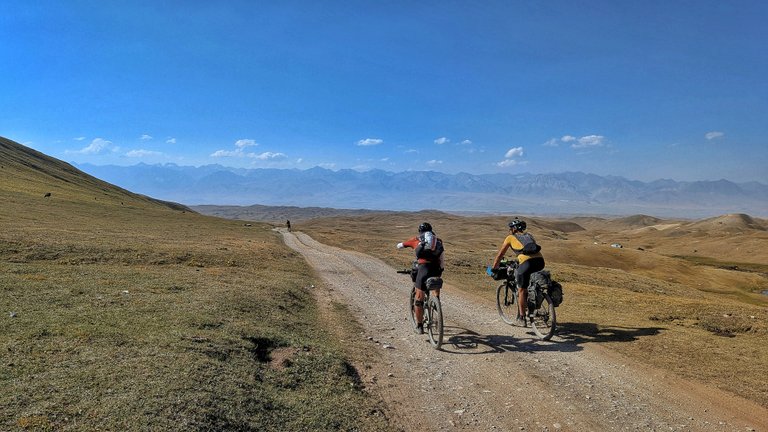
We tried another shop—not self-service. We had to tell them what we wanted, making choices harder. The lady eventually gave up and let us behind the counter.
Shops weren’t that bad. They had bulk items—dried fruit, nuts, even cookies that were decent. I bought some fizzy water, bread, and cheese. Selection wasn’t bad at all.
Waste was trickier. There were practically no bins. Later I learned about a box system. Outside or inside the shop, there was a box for trash from purchases. Likely burned or dumped in a field. In Osh, these boxes were bigger. I could even identify bike shops by the boxes, full of chains, cranks, and used components.
That night we aimed for 3500 meters—our maximum. Then it was time to start regenerating. No point overdoing it before the race. Even during the race, I never planned to sleep that high—I always wanted to descend a bit. I already felt pretty trashed.
🚖 Taxi with Locals
Night was rough, morning too. We got to Lenin Peak base camp, future CP1. Food overpriced, hinting at things to come. The guys wanted to hit Traveller’s Pass, just above 4000, which I flatly refused. I lay down behind a yurt. No one could get me higher!
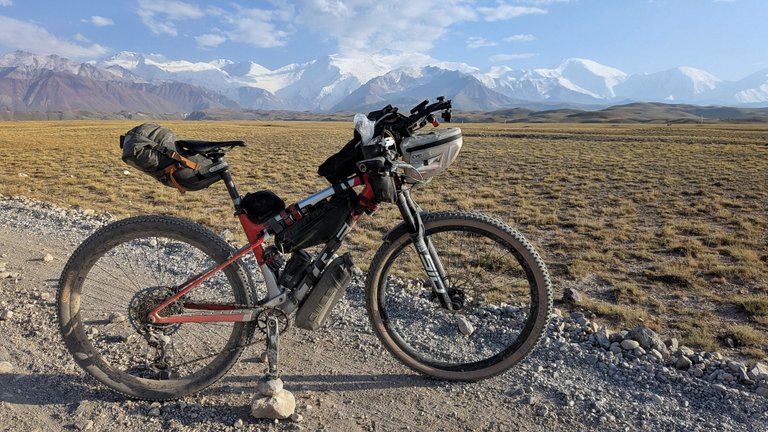
I was so tired I weakly and cynically protested their suggestion to return via the race route. Eventually we agreed it wasn’t wise and shortened the route, taking a taxi for the rest.
Along the Pamir Highway, we slowly returned to the mountains. Halfway we slept on prickly plants, but the mat held, and we continued the next day. In a village, we met Hannes, whose bike had already arrived. It was easy to run into other Silk Road Mountain Race participants.
This was lucky for us—we could ask how transport worked. At Lenin Peak base camp, we were offered a ride for insane (here, non-Muslim) money, which we declined. The cheapest way to travel here is by maršrutka—a small bus that leaves when full. No bike hooks, but buying an extra seat usually works; the driver will likely accommodate.
Interesting how in the West we’re bound by rules that give structure and safety but often limit us unnecessarily. Try sneaking a bike on a bus at home. Impossible! In Kyrgyzstan, it’s about agreement and willingness.
😪 Let’s Regenerate
We climbed to Koydzhuly Pass—if that’s its name. Mapy.cz has it; Google doesn’t. The ascent was easy, descent interesting. So interesting I crashed. Tony rushed over with a med kit huge enough to fit mine five times. Nothing serious, just a banged-up knee. Maybe bent the handlebars, don’t know.
We descended to 2500, so sleep improved. Not sure sleeping on fallen rocks was wise, but we didn’t want to go further. On the map it was marked as suitable for camping. Before evening, strange clouds raced by, but it ended up calm and fairly warm. The stream sang us a lullaby.
Marika from Latvia Marika slept with us, giving us some nice photos 👇
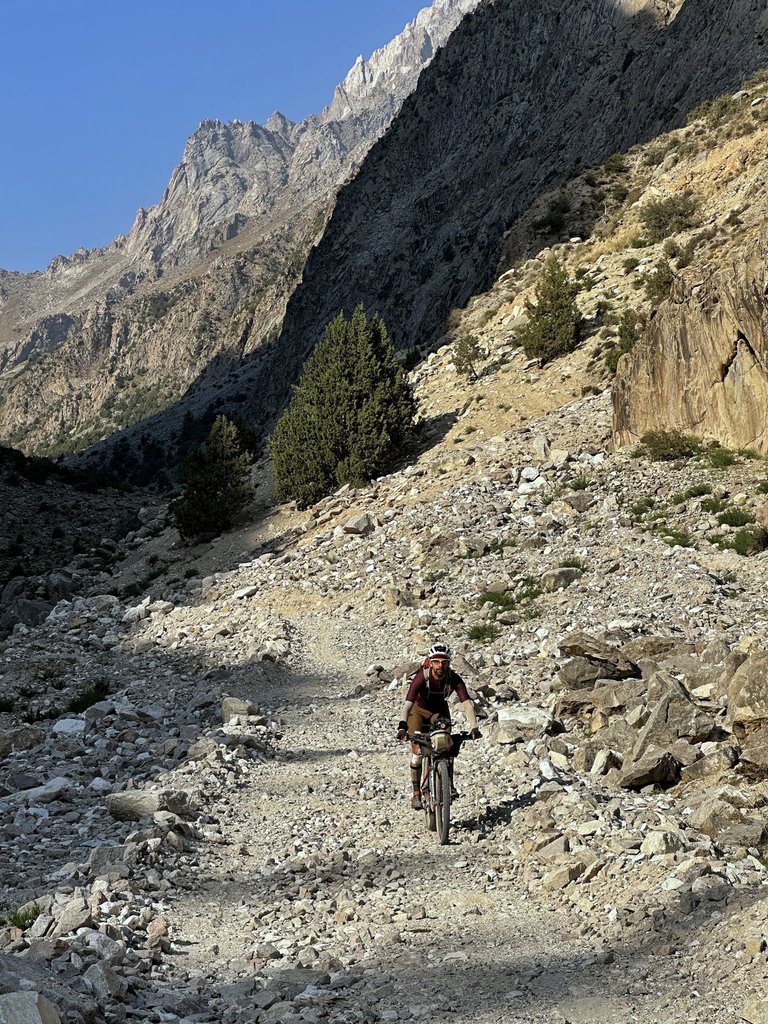
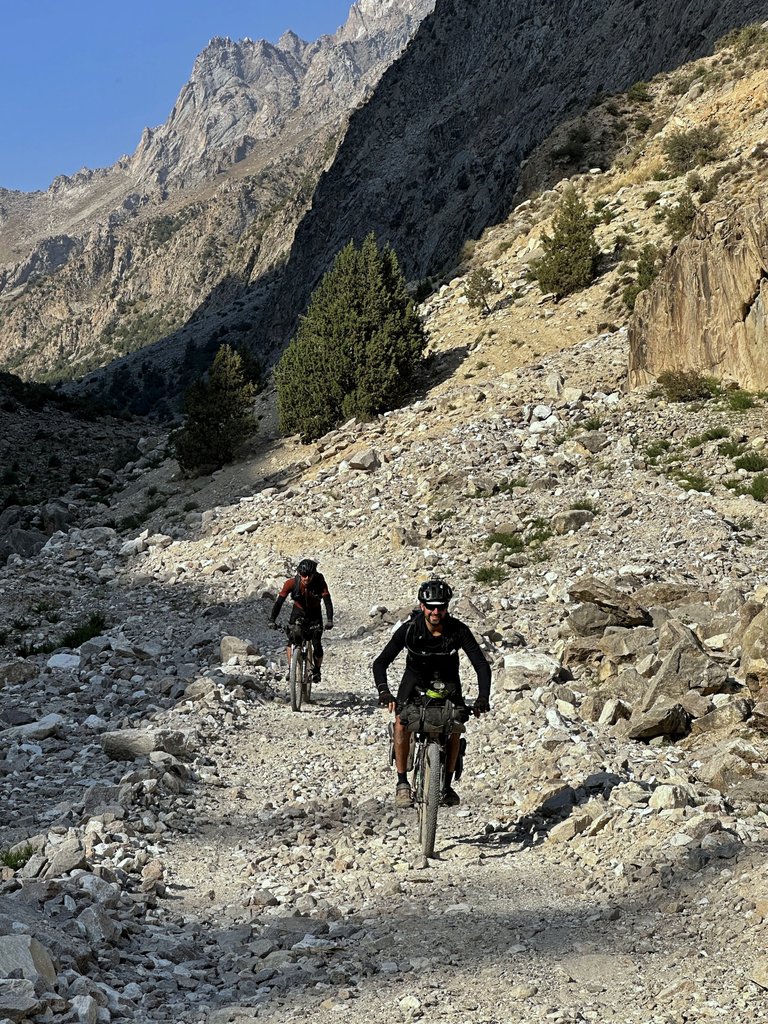

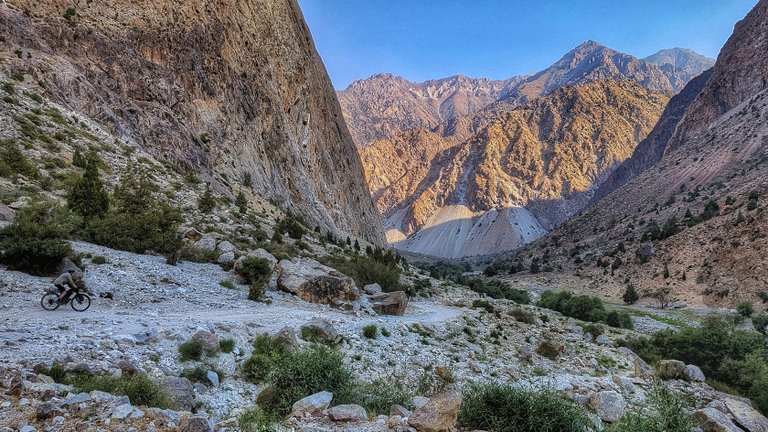
In short, we descended to civilization and got a taxi. Worked like a maršrutka—shared with other passengers until full, with space for bikes, making it more comfortable. Four bikes wouldn’t fit in a normal, cheap maršrutka.
In Osh, we reserved two nights for recovery—probably should’ve taken three. Nothing stopped us from starting this adventure on the Silk Road Mountain Race.
Published | #Bikepacking
Silk Road Mountain Race 2025
- We coudn’t care less
- Acclimatization Ride
- Day #1 How I Was Asking For It
- Day #2 How I Caught the Snail
- Day #3 When It Rained Rocks
- Day #4 How I Crossed the Pamir Highway
- Day #5 How I Walked
- Day #6 How I became a sailboat
- Day #7 How I ate a meatless pizza with salami
- Day #8 How I almost froze
- Day #9 How I ate the fateful borscht
- Day #10 How I Was Surprised by Snow
- Day #11 How I Almost Swam
- Day #12 How Soldiers Stopped Me
💬 No comments yet
What are your thoughts? 🤔 Feel free to ask any questions 📫
